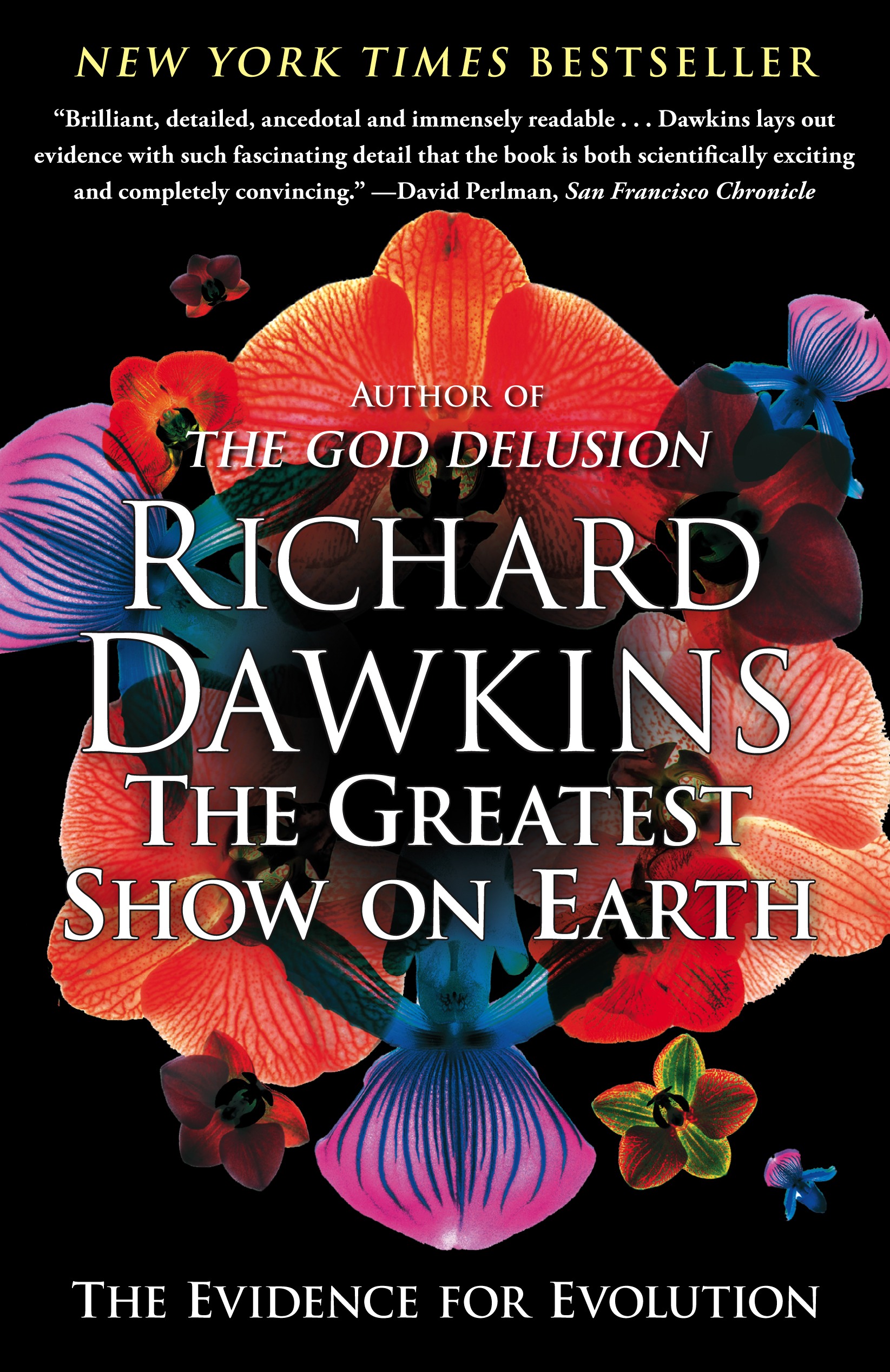The Greatest Show on Earth Summary
5 min read ⌚
 The Evidence for Evolution
The Evidence for Evolution
By now, you’d think that developments in genetics should have vindicated Darwin once and for all. Unfortunately, one-third of Americans don’t believe in it, with another third thinking that it was actually guided by God.
In “The Greatest Show on Earth,” Richard Dawkins tries to clear things up.
About Richard Dawkins
 Richard Dawkins is a British evolutionary biologist and ethologist. He was a Professor of Zoology at the University of California at Berkley and a Professor for Public Understanding of Science at the University of Oxford.
Richard Dawkins is a British evolutionary biologist and ethologist. He was a Professor of Zoology at the University of California at Berkley and a Professor for Public Understanding of Science at the University of Oxford.
A revered public intellectual and a beloved science popularizer, Dawkins has authored numerous books on biology and atheism, including “The Selfish Gene,” “The Blind Watchmaker,” and “The God Delusion.”
“The Greatest Show on Earth Summary”
“This book,” writes Richard Dawkins in the preface to “The Greatest Show on Earth,” “is my personal summary of the evidence that the ‘theory’ of evolution is actually a fact—as incontrovertible a fact as any in science.“
And, when you think about it, really, what is there to debate about? The evidence for evolution is everywhere around us.
Just look at all the dog breeds!
Most of them are man-made, through a careful process of selection, which, for some breeds, has lasted for thousands of years! Because, intuitively, people knew that reproduction works by combining half of the genes from the father with half of the genes from the mother. And with these genes, unique characteristics are also passed on.
Thus, by artificially choosing the mothers and the fathers, people created breeds with the characteristics they specifically wanted in them.
Well, the same thing happened with evolution as well. The only two differences: it happened naturally, and it lasted for millions of years!
But, you may wonder, if everything started from common ancestors, how is it possible that there are so many species on the planet today?
Simply put, it’s because these common ancestors evolved separately. In the early days, due to the super continent separating into few other continents; then, because of earthquakes and floods within these continents. And, sometimes, because of strange occurrences we can’t even imagine.
For example, green iguanas arrived on Anguilla in 1995 – by floating on pieces of driftwood!
Out of the numerous iguanas which probably started the journey, only 15 made it to the Caribbean island. The other died of hunger and injuries. These 15 were the strongest; in other words, their genes deserved to be passed on.
That, right there – that’s natural selection for you!
And, believe it or not, decades from now, the Anguillan iguanas will start to differ greatly from the green iguanas that were their grandparents. That has happened and we have observed it! Namely, in 1971, scientists moved a small population of lizards from one Mediterranean island to another. What they found in 2009 was a new lizard subspecies.
Add time – and that’s how trillion of species were created!
And the mechanism is all but commonsensical.
For example, if some genetic mutation happens in an antelope giving it longer legs and making it faster, that specimen will have better chances to survive and procreate. Consequently, the gene responsible for the longer legs will have a better chance of mutating further. Of course, this will affect the cheetahs as well: only the fastest among them will survive. The others will die out of hunger.
So, both antelopes and cheetahs will strive to be faster. Evolutionary biologists call this process the evolutionary arms race.
But, despite the differences, there are also many similarities between species; relicts of the time they diverged in the evolutionary tree. For example, bats have wings and humans hands – but their skeleton is homologous, i.e. it follows the same layout.
In other words, in some distant history, humans and bats had a common ancestor. Bat wings are actually elongated and stretched finger bones – and the other way around!
Speaking of relics – do you know that you have a tail?
Key Lessons from “The Greatest Show on Earth”
1. Evolution Is Not a Theory – It’s a Scientific Fact
2. Your Body Betrays Your Evolution – And Forever Will
3. We Will Never Find a Crocoduck – And That’s Evidence for Evolution
Evolution Is Not a Theory – It’s a Scientific Fact
One in two Americans believe that evolution is a theory. And a wrong one, mind you!
However, this is simply not true. Evolution is not a theory, nor just a good scientific hypothesis. It was the latter back in the 19th century when Darwin proposed it. By now, it has been proved beyond any reasonable doubt.
In other words, whether you believe in it or not, evolution definitely happened.
Your Body Betrays Your Evolution – And Forever Will
Creationists believe that the Earth is no older than 6,000 years (the Bible says so, apparently) and that there was no time for evolution to work its magic. Moreover, that the earth’s age is a conclusive proof that God created all life on earth as it currently is.
But, this begs few questions.
First and foremost, why did God bother to give you a tail you will never ever need? And why do you have an appendix? Or wisdom teeth?
Next, have you ever wondered where do goose bumps come from? The answer is: from the you’re your ancestors needed to regulate your body temperature.
Thirdly, why did God create an eye which actually looks upside-down? Instead of bothering the brain to correct the image, he could have made a perfect eye, couldn’t he?
And finally, do you know that the human genome contains a gene which, in most other mammals, produces a Vitamin-C-synthesizing enzyme? Humans don’t need the gene. But it’s still there. Turned off and disabled.
We Will Never Find a Crocoduck – And That’s Evidence for Evolution
In 2007, Kirk Cameron – yes, the guy from “Growing Pains” and “Like Father Like Son” – and Ray Comfort presented a strange argument against evolution. Namely, if it happened, then why aren’t we able to find a fossil of a crocoduck, an animal with the head of a crocodile, and the body of a duck.
The answer is: because evolution doesn’t work that way. True, crocodiles and ducks have some common ancestor – but probably it looked like neither of them. In fact, if we actually do find a crocoduck – then we’ll have to rethink the concept of evolution.
But, don’t worry: we’ll never find one.
Like this summary? We’d like to invite you to download our free 12 min app, for more amazing summaries and audiobooks.
“The Greatest Show on Earth” Quotes
Evolution could so easily be disproved if just a single fossil turned up in the wrong date order. Evolution has passed this test with flying colours. Share on X Why would an all-powerful creator decide to plant his carefully crafted species on islands and continents in exactly the appropriate pattern to suggest, irresistibly, that they had evolved and dispersed from the site of their evolution? Share on X Even if it were true that evolution, or the teaching of evolution, encouraged immorality that would not imply that the theory of evolution was false. Share on X If the history-deniers who doubt the fact of evolution are ignorant of biology, those who think the world began less than ten thousand years ago are worse than ignorant, they are the deluded to the point of perversity. Share on X It would be so nice if those who oppose evolution would take a tiny bit of trouble to learn the merest rudiments of what it is that they are opposing. Share on X
Emir is the Head of Marketing at 12min. In his spare time, he loves to meditate and play soccer.


 The Evidence for Evolution
The Evidence for Evolution



